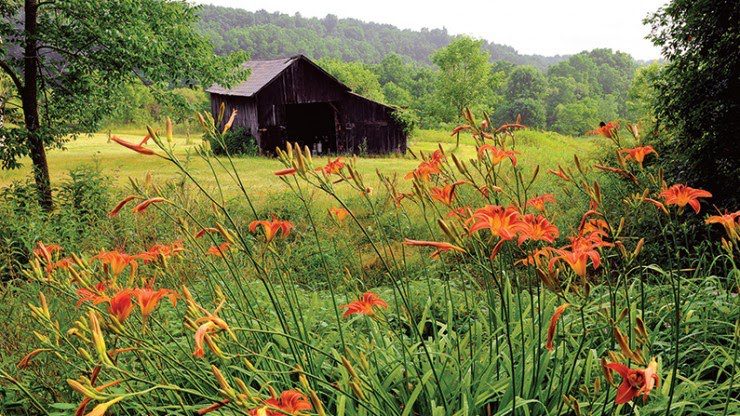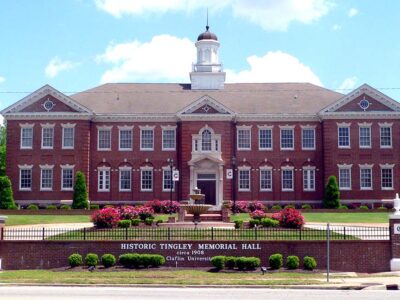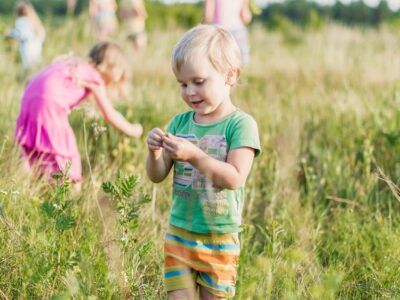Anybody who has been to Gambier, Ohio has taken what’s known as “Middle Path,” a pedestrian thoroughfare that spans the town, and whose travelers include both local residents and Kenyon College students.
Amid the fertile farmland and lush forests surrounding Gambier—a village snugly tucked within a bend of the Kokosing river and located roughly an hour’s drive to the northeast of Columbus—lies Kenyon. Founded in 1824 by Episcopal bishop Philander Chase, the College is known for the stunning, pastoral setting in which its campus is nestled; given the radiance of its idyllic location, it’s no small wonder that Ohio’s first private liberal arts college, enjoying its prestigious status as a “Hidden Ivy,” boasts an impressive record in sustainability measures, conducted primarily through its Office of Green Initiatives.
Conservation with a Purpose
The Brown Family Environmental Center
In order to maintain its storied glorious views increasingly threatened by development in its surrounding areas, Kenyon has, throughout the years, undertaken a host conservation projects. In 1995, it created the Brown Family Environmental Center (BFEC), a 500-acre preserve in the Kokosing River valley. With nine miles of hiking paths and a host of spots for picnicking, the Center strives to serve as an active agent of change in reviving the region’s forests, which, with the rise of industrialization and urban expansion, had reached an all-time low of 10% of coverage in Ohio in the early 1900s. In its objective to return the land to a self-sustaining ecosystem, the BFEC devises strategies for reforestation, which in turn promotes diversity in wildlife species as well as clean air and drinking water.
Education is key to the BFEC’s initiatives. Offering a spate of free public programs on subjects as varied as medicinal plants, nature art, and stargazing, the BFEC also provides a prime setting for Kenyon students of many programs—art, photography, zoology, and poetry among them—to learn firsthand about their subjects or to seek creative inspiration.
The BFEC engages actively with surrounding Knox County residents by creating community-based annual traditions. In the autumn, during its Fall Harvest Festival, it holds the Knox County Nature Photography Contest, and local birdwatchers can participate in the Christmas Bird Count, as part of the 120-year-old Audubon Society initiative.

The Philander Chase Conservancy and the Kokosing Nature Preserve
Also as a response to a surge of development in Knox County in the mid-1980s, Kenyon took an unprecedented step among American institutions of higher education: it founded its own land trust. In 2000, the College designated the Philander Chase Conservancy—named after Kenyon’s founder—to ensure the integrity of local farmland. To date, the Conservancy has facilitated the protection of 5,500 acres of land, where 62 farms remain picturesquely scattered. The Conservancy’s efforts demonstrate not only Kenyon’s ongoing commitment to preserving its campus’ rural environment known to “please the eye and nourish the spirit,” but also to engaging its extended community, whose members have testified that, without the College’s intervention, they would have lost their farms.
One of the Conservancy’s most innovative projects is the creation of the Kokosing Nature Preserve, a 23-acre area of restored prairies-turned conservation burial ground. The first in the U.S. to be associated with a college or university, the Preserve respects the ancient tradition of placing the departed in shrouds or biodegradable caskets rather than embalming them and using metal or concrete vaults. Graves are marked not with traditional tombstones, but with natural engraved stones that lie flat on the ground, thereby ensuring that a landscape’s views remain pristine.
Sustainability Curriculum
It comes as no surprise that an institution as dedicated to preserving its local and regional environment as Kenyon also houses creative programs in sustainability. In addition to its majors/minors in Biology and Environmental Studies, Kenyon hosts the Food for Thought initiative, a multi-disciplinary approach to studying food sources. Via coursework spanning a wide range of disciplines—biology, anthropology, sociology, psychology, photography, and history, among others—students embarking on this multi-dimensional path explore all angles of farming and rural life. For example, what economic and environmental impact does industrial agriculture have on our society? How do current farming practices affect the environment? How are eating habits formed by the conceptions of food in different cultures? How does the decline of small farming potentially unravel democracy?
Besides raising awareness of food sources, the Food for Thought Initiative is intended to forge bonds with surrounding communities, as one of its goals is to collaborate in the elaborate public project of constructing a sustainable market for locally grown food.
Academics Meet Practice: The Kenyon Farm
Kenyon students in environment-focused programs also have a unique and rewarding opportunity to align their talk to their walk by choosing to live on the Kenyon Farm. Those who take advantage of this one-of-a-kind experience inhabit a house on the College’s 10-acre farm and develop hands-on experience growing and harvesting crops and managing the care of farm animals, all the while juggling their coursework. Crops and eggs from the farm are in turn used in the dining hall, as well as at the Kenyon Inn.
These students can choose from related courses like Conservation Biology, Solar Energy, Permaculture and Homestead Winter Farming, and Environmental Economics as they deepen their experience in living an agricultural life. Upon graduating, some undertake careers in farming, while others aspire to work in policy roles targeting food safety and sustainability.
Kenyon Students Collaborate to Create an Eco-Friendly Campus
In addition to running the Kenyon Farm, students on the Kenyon campus participate in a number of sustainability-related activities. At the Office of Green Initiatives, director David Heithaus notes that students are the driving force behind the College’s pledge to achieve carbon neutrality by 2040, and the Office’s internship program creates opportunities for students’ voices to be heard and put into action. Interns work at the Philander Chase Conservancy, and students can get summer assistantships at the BFEC, where they participate in land and garden management, program coordination and community outreach, as well as the BFEC’s Nature’s Keepers summer camp for school-age children. During the academic year, student managers live at the BFEC house and assist in hosting community events. Kenyon students can also become trained field trip leaders, putting their interest in environmental education into practice as they guide children in exploring the Center’s diverse habitats.
Students also maintain A Knox County Almanac, a blog featuring student, staff, and local resident reflections on and photos of local and regional flora, fauna, and animal life. Besides sharing musings on their surroundings, contributors publish environment-related conversations with alums and “Love Letters to the Land.”
Kenyon students also display their deep commitment to eco-friendly practices in student organization work, including the Environmental Campus Organization (ECO), Land Lords, and the Kenyon College Beekeeping Club (KCBeeC). ECO members host local dinners, screenings focused on sustainability topics, and their annual IntersectECO conference, while the Land Lords, Kenyon’s premier conservationist group, herd members to maintain BFEC trails. KCBeeC promotes environmental stewardship on campus and in Knox County, with its members joining forces to carry out the College’s role as an affiliate of the national Bee Campus USA program, an initiative of the Xerces Society’s pollinator conservation program. Students likewise assist in formulating and carrying out measures to solidify Kenyon’s longstanding designation as a Tree Campus by meeting the Arbor Day Foundation’s Tree Campus USA standards.





 Copyright
2024
Root and Vine
Copyright
2024
Root and Vine